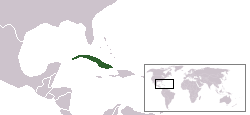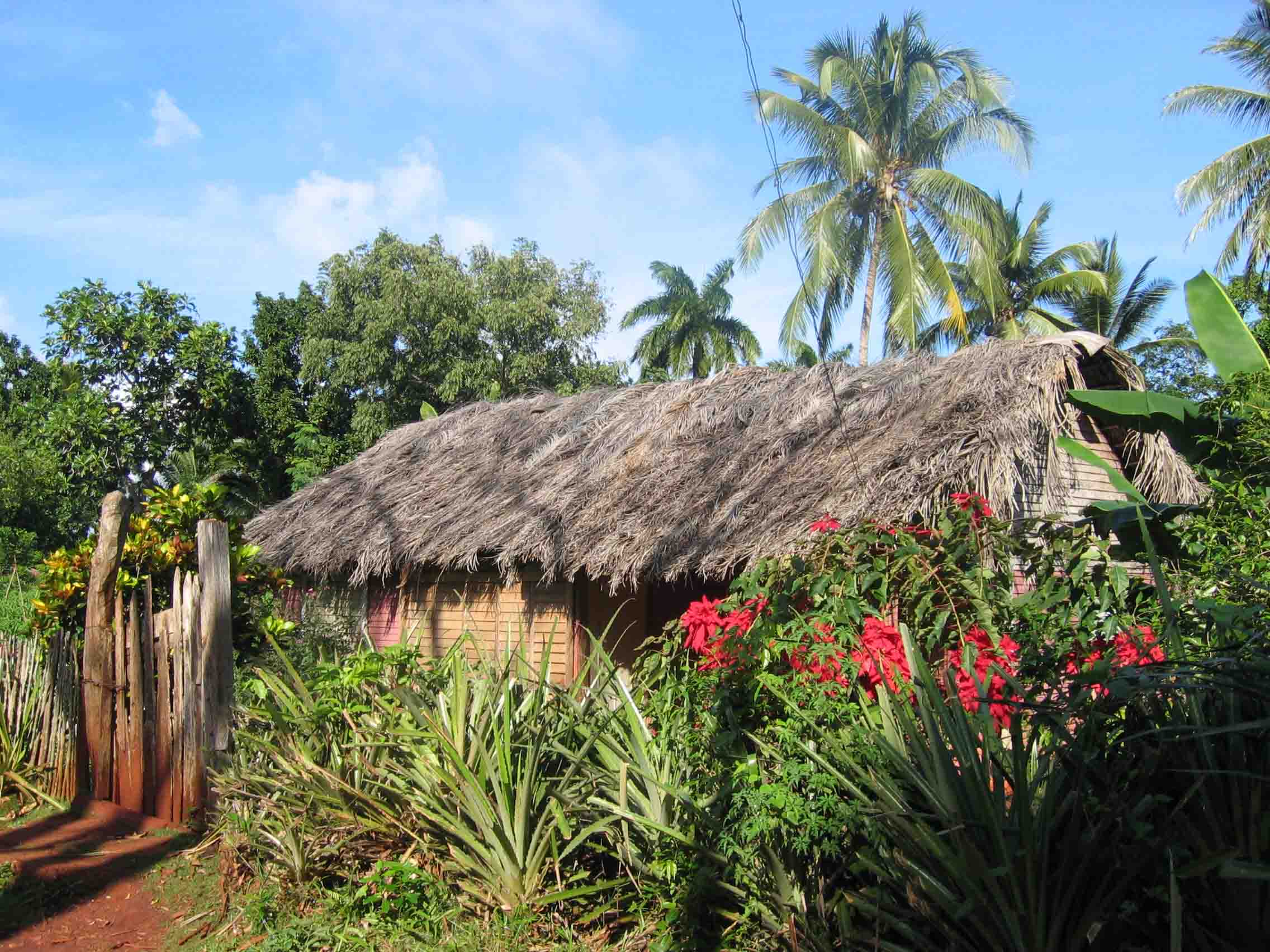|
List Of Non-marine Molluscs Of Cuba
The non-marine molluscs of Cuba are a part of the molluscan wildlife of Cuba. Numerous species of non-marine molluscs are found in the wild in Cuba, which is in fact one of the richest places for the malacological fauna in the world, especially in land snails, hosting a high degree of endemism. Cuba has some highly charismatic species of land snails, such as those of the genus '' Polymita'' and '' Liguus''. A total of 42 species of freshwater molluscs occur in Cuba. Introduced species such as ''Tarebia granifera'' and ''Melanoides tuberculata'' are spread throughout the country and might be a threat for endemics and other native snails. History There are many works regarding taxonomic and systematic studies in marine and land molluscs with a fewer number on ecology and distribution. Freshwater molluscs, however, are scarcer and have received less attention. Freshwater molluscs overview A total of 10 (23.8%) out of 42 described freshwater snails and mussels are endemic in ... [...More Info...] [...Related Items...] OR: [Wikipedia] [Google] [Baidu] |
Viviparus
''Viviparus'', common name the river snails, is a genus of large, freshwater snails with an operculum, aquatic gastropod mollusks.Bouchet, P. (2014). Viviparus Montfort, 1810. Accessed through: World Register of Marine Species at http://www.marinespecies.org/aphia.php?p=taxdetails&id=154004 on 2014-11-13 They are primitive members of the clade Caenogastropoda. The old name of the genus was ''Paludina''. Distribution This genus is palaearctic in distribution, and is known from the Jurassic to the Recent. Species ''Viviparus'' belongs to the subfamily Viviparinae. Its taxonomy is currently under development and many of its species are often included in other related genera. It includes the following species: * † ''Viviparus achatinoides'' (Deshayes, 1838) * '' Viviparus acerosus'' (Bourguignat, 1862) * † '' Viviparus aitaiensis'' Jekelius, 1932 * † '' Viviparus alexandrieni'' Cobălcescu, 1883 * † '' Viviparus altecarinatus'' Brusina, 1874 * † '' Viviparus altu ... [...More Info...] [...Related Items...] OR: [Wikipedia] [Google] [Baidu] |
Baracoa
Baracoa, whose full original name is: ''Nuestra Señora de la Asunción de Baracoa'' (“Our Lady of the Assumption of Baracoa”), is a municipality and city in Guantánamo Province near the eastern tip of Cuba. It was visited by Admiral Christopher Columbus on November 27, 1492, and then founded by the first governor of Cuba, the Spanish conquistador Diego Velázquez de Cuéllar on August 15, 1511. It is the oldest Spanish settlement in Cuba and was its first capital (the basis for its nickname ''Ciudad Primada'', "First City"). Geography Baracoa is located on the spot where Christopher Columbus landed in Cuba on his first voyage. It is thought that the name stems from the indigenous Arauaca language word meaning "the presence of the sea". Baracoa lies on the Bay of Honey (''Bahía de Miel'') and is surrounded by a wide mountain range (including the Sierra del Purial), which causes it to be quite isolated, apart from a single mountain road built in the 1960s.The Baracoa mountai ... [...More Info...] [...Related Items...] OR: [Wikipedia] [Google] [Baidu] |
Zapata Swamp
The Zapata Swamp ( es, Ciénaga de Zapata, ) is located on the Zapata Peninsula in the southern Matanzas Province of Cuba, in the municipality of Ciénaga de Zapata. It is located less than southeast of Havana. Species and preservation Within the Zapata Swamp are over 900 autochthonous plant species, 175 species of birds, 31 species of reptiles and over 1000 species of invertebrates. Some of the most notable are local endemics to Cuba; for birds, it includes the Zapata wren, Zapata rail, and the Zapata sparrow. The Zapata Swamp is also a particular habitat of the bee hummingbird, the smallest bird species on the planet. The Zapata Swamp is also visited by 65 species of birds during their migration pattern from North America through the Caribbean to South America. Zapata is also known for the local endemic Cuban crocodile ''(Crocodylus rhombifer)'' which are restricted to the Zapata Swamp and are being reintroduced to the nearby Lanier Swamp on the Isle of Youth ( es, Isla de la ... [...More Info...] [...Related Items...] OR: [Wikipedia] [Google] [Baidu] |
Viñales
Viñales is a town and municipality in the north-central Pinar del Río Province of Cuba. The town consists mostly of one-story wooden houses with porches. The municipality is dominated by low mountain ranges of the Guaniguanico, Cordillera de Guaniguanico such as Sierra de los Órganos. Typical outcrops known as ''mogotes'' complete the karstic character of the landscape. The town and the Viñales Valley immediately to the north were made a UNESCO World Heritage Site in November 1999 for the karst landscape and traditional agriculture as well as vernacular architecture, crafts and music. History Before European settlement, the area was the home of a remnant Taíno people, Taíno population swelled with runaway slaves.Guerrillero:Pinar del Río"El Templo de los Cimarrones" The area was colonised at the beginning of the 1800s by tobacco growers from the Canary Islands, who settled in the Vuelta Abajo region. The first colonial settlement in Viñales is documented in 1871, in the ... [...More Info...] [...Related Items...] OR: [Wikipedia] [Google] [Baidu] |
Tourism In Cuba
Tourism in Cuba is an industry that generates over 4.7 million arrivals , and is one of the main sources of revenue for the island. With its favorable climate, beaches, colonial architecture and distinct cultural history, Cuba has long been an attractive destination for tourists. "Cuba treasures 253 protected areas, 257 national monuments, 7 UNESCO World Heritage Sites, 7 Natural Biosphere Reserves and 13 Fauna Refuge among other non-tourist zones." Having been Spain's closest colony to the United States until 1898, in the first part of the 20th century Cuba continued to develop with the influence of big investments, the creation of various industries, and growing travel to support mostly US interests and corporations. Its proximity (roughly from the Florida Keys) and close relationship to the United States also helped Cuba's market economy prosper fairly quickly. As relations between Cuba and the United States deteriorated rapidly after the Cuban Revolution of 1959 and the ... [...More Info...] [...Related Items...] OR: [Wikipedia] [Google] [Baidu] |
Cauto River
The Cauto River or Río Cauto is the longest river in Cuba, as well as the longest river in the Caribbean. Located in the southeast of the island, it is one of two navigable rivers in Cuba, the other being the Sagua la Grande River. Overview The Cauto flows for from the Sierra Maestra to the west and north-west, and enters the Caribbean Sea north of Manzanillo. However, it provides only of naviaable waterway. A 2013 study led by multiple Cuban academic institutions determined that the river could be 'classified as unpolluted to moderately polluted'. It flows through the provinces of Santiago de Cuba, Holguin, and Granma. The communities of Palma Soriano, Cauto Cristo Cauto Cristo is a municipality and town in the Granma Province of Cuba. It is located on the banks of the Río Cauto, in the western part of the province, bordering the provinces of Holguín and Las Tunas. Demographics In 2004, the municipality ..., and Rio Cauto are located along the river. Rice, sugarcane ... [...More Info...] [...Related Items...] OR: [Wikipedia] [Google] [Baidu] |
Habitat Destruction
Habitat destruction (also termed habitat loss and habitat reduction) is the process by which a natural habitat becomes incapable of supporting its native species. The organisms that previously inhabited the site are displaced or dead, thereby reducing biodiversity and species abundance. Habitat destruction is the leading cause of biodiversity loss. Fragmentation and loss of habitat have become one of the most important topics of research in ecology as they are major threats to the survival of endangered species. Activities such as harvesting natural resources, industrial production and urbanization are human contributions to habitat destruction. Pressure from agriculture is the principal human cause. Some others include mining, logging, trawling, and urban sprawl. Habitat destruction is currently considered the primary cause of species extinction worldwide. Environmental factors can contribute to habitat destruction more indirectly. Geological processes, climate change, introdu ... [...More Info...] [...Related Items...] OR: [Wikipedia] [Google] [Baidu] |
Water Pollution
Water pollution (or aquatic pollution) is the contamination of water bodies, usually as a result of human activities, so that it negatively affects its uses. Water bodies include lakes, rivers, oceans, aquifers, reservoirs and groundwater. Water pollution results when contaminants are introduced into these water bodies. Water pollution can be attributed to one of four sources: sewage discharges, industrial activities, agricultural activities, and urban runoff including stormwater. It can be grouped into surface water pollution (either fresh water pollution or marine pollution) or groundwater pollution. For example, releasing inadequately treated wastewater into natural waters can lead to degradation of these aquatic ecosystems. Water pollution can also lead to water-borne diseases for people using polluted water for drinking, bathing, washing or irrigation. Water pollution reduces the ability of the body of water to provide the ecosystem services (such as drinking water) that ... [...More Info...] [...Related Items...] OR: [Wikipedia] [Google] [Baidu] |
Demographics Of Cuba
The demographic characteristics of Cuba are known through census which have been conducted and analyzed by different bureaus since 1774. The National Office of Statistics of Cuba (ONE) since 1953. The most recent census was conducted in September 2012. The population of Cuba at the 2012 census was 11.2 million. The population density is 100.7 inhabitants per square kilometer, and the overall life expectancy in Cuba is 78.0 years. The population has always increased from one census to the next, with the exception of the 2012 census, when the count decreased by 10,000. Since 1740, Cuba's birth rate has surpassed its death rate; the natural growth rate of the country is positive. Cuba is in the fourth stage of demographic transition. In terms of age structure, the population is dominated (71.1%) by the 15- to 64-year-old segment. The median age of the population is 41.8, making it the oldest in the Americas, and the gender ratio of the total population is 0.99 males per female. Popu ... [...More Info...] [...Related Items...] OR: [Wikipedia] [Google] [Baidu] |
Habitat Loss
Habitat destruction (also termed habitat loss and habitat reduction) is the process by which a natural habitat becomes incapable of supporting its native species. The organisms that previously inhabited the site are displaced or dead, thereby reducing biodiversity and species abundance. Habitat destruction is the leading cause of biodiversity loss. Fragmentation and loss of habitat have become one of the most important topics of research in ecology as they are major threats to the survival of endangered species. Activities such as harvesting natural resources, industrial production and urbanization are human contributions to habitat destruction. Pressure from agriculture is the principal human cause. Some others include mining, logging, trawling, and urban sprawl. Habitat destruction is currently considered the primary cause of species extinction worldwide. Environmental factors can contribute to habitat destruction more indirectly. Geological processes, climate change, introdu ... [...More Info...] [...Related Items...] OR: [Wikipedia] [Google] [Baidu] |




